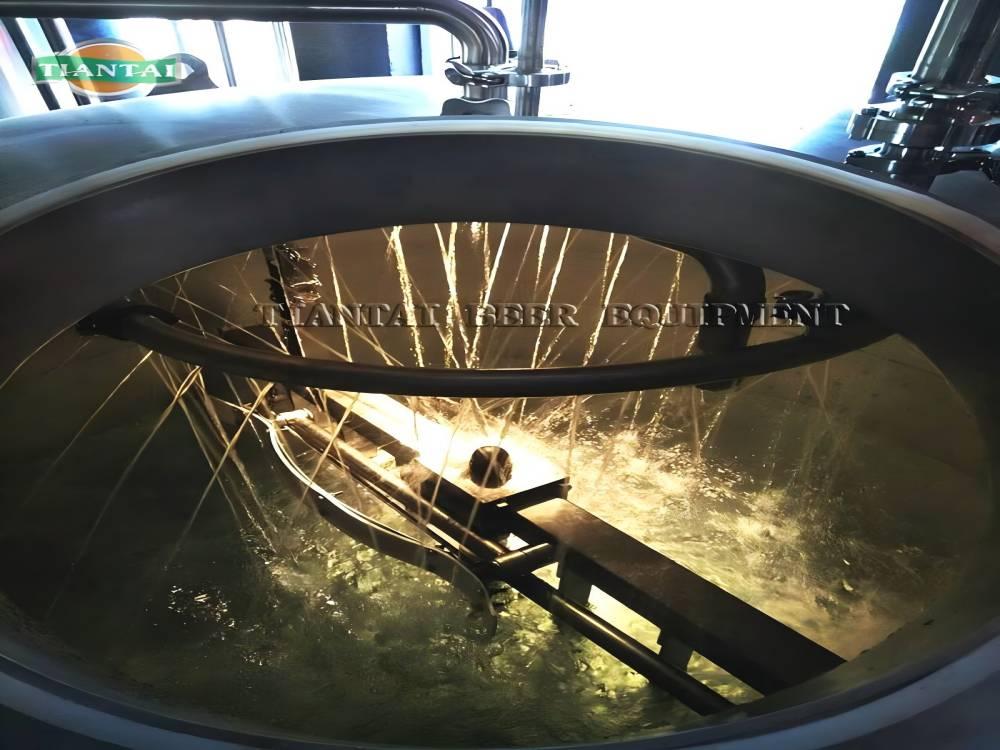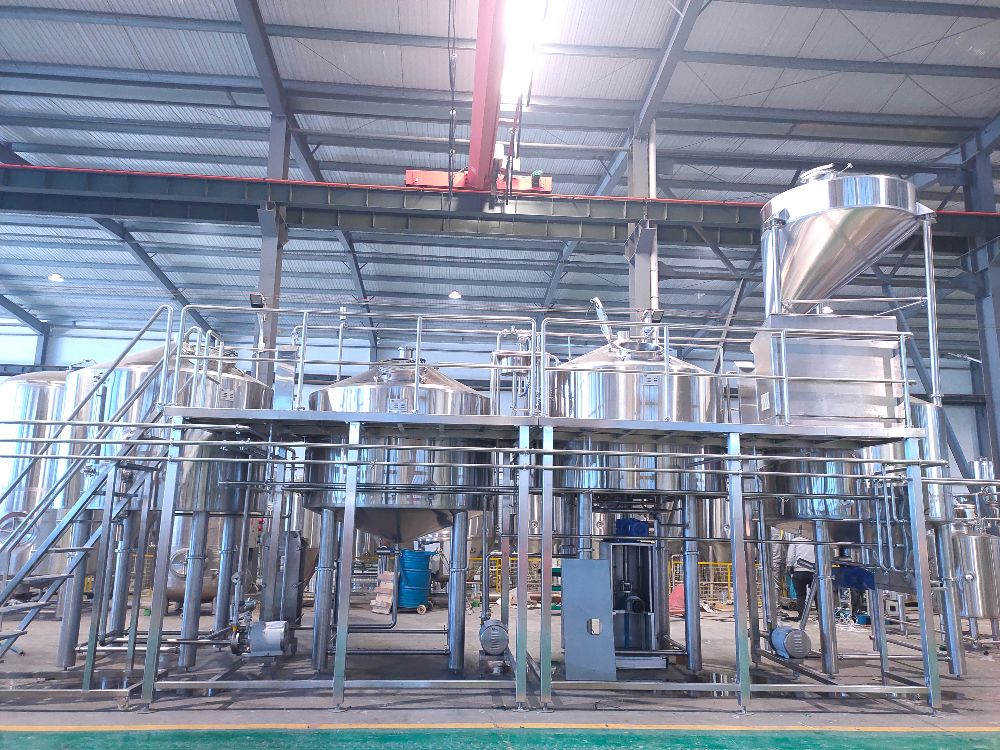Optimizing Grain Bed Depth to Enhance Filtration Efficiency in Brewing Equipment
- Mar 14, 2025
- 195
- tiantai
In beer brewing, the design of the lauter tun and the thickness of the grain bed directly impact wort lautering efficiency. A well-optimized grain bed ensures smooth wort flow, prevents clogging, and enhances the overall performance of brewhouse equipment. Therefore, understanding how to calculate and optimize grain bed depth is crucial when selecting or designing brewing equipment.

Example Calculation of Grain Bed Depth
To make it easier to understand, let’s consider the following example.
Common Parameters:
Grist-to-water ratio: 1:4
Ideal grain bed depth: 30-40 cm
Given Conditions:
Malt: 200 kg
Lauter Tun: Ø1460 mm, height 2500 mm, insulation 80 mm
Malt Water Absorption: 1.8 L/kg (typically 1.5-2.0 L/kg, here we take 1.8 L/kg)
Calculation Steps:
1.Calculate the Inner Diameter of the Lauter Tun
Outer diameter: 1460 mm
Inner diameter = 1460 mm - 2 × 80 mm = 1300 mm (Ø1.3 m)
2.Calculate the Floor Area
Floor area = π × (0.65 m)² ≈ 1.326 m²
3.Calculate the Malt Volume
Absorbed volume = 200 kg × 1.8 L/kg = 360 L = 0.36 m³
Grain bed height calculation: The depth of the grain bed = Volume of water absorbed by the malt / Floor area
Optimizing Grain Bed Depth by Adjusting Tun Diameter
In this example, the grain bed depth is approximately 27.1 cm, slightly below the ideal range.
To optimize it, the following methods can be applied:
1.Increase the Lauter Tun Diameter:
For example, increasing the inner diameter to 1.5 m (floor area 1.767 m²) will reduce grain bed depth.
Conversely, reducing the diameter will increase the bed depth, potentially affecting filtration speed.
2.Adjust Malt Input:
Increasing malt quantity raises grain bed depth, but excessive thickness may reduce filtration efficiency.
3.Optimize Grist-to-Water Ratio:
While the ratio itself does not directly control grain bed depth, adjusting water volume can indirectly influence filtration performance.
Conclusion:
By properly adjusting the lauter tun diameter and malt input, brewers can optimize grain bed depth, enhance wort filtration efficiency, and improve the overall performance of mashing equipment. For different scales of brewing equipment, selecting the right lauter tun specifications based on production needs ensures a stable and efficient brewing process.
If you need my help to calculate the detailed thickness of the grain bed and improve the lautering efficiency, please feel free to contact Tiantai!
Edited by Amanda
Sales manager | Tiantai beer equipment
Email: [email protected]


.jpg)

